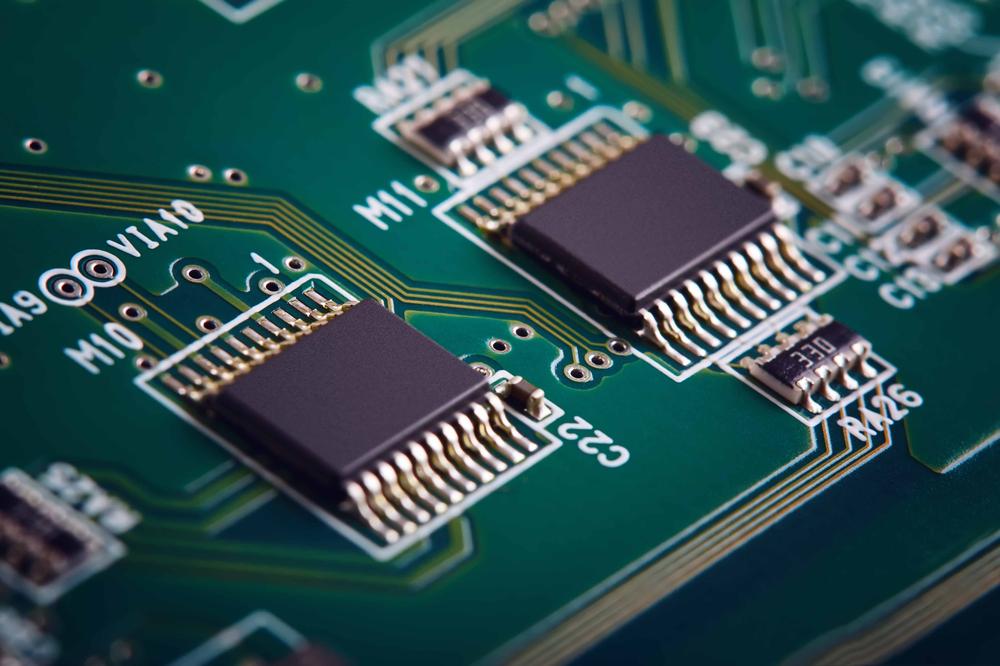
The B2B platform for the best purchasing descision. Identify and compare relevant B2B manufacturers, suppliers and retailers
Close
Filter
Result configuration
Continents
Select continent
Locations
Result types
Company type
Select company type
Industries
Select industry
Company status
Select company status preset
Number of employees
Min.
Max.
Founding year
Nanopaint
Braga, Portugal
A
1-10 Employees
2016
Key takeaway
The company specializes in developing innovative printed sensors, contributing to the evolution of the Internet of Things (IoT) by integrating these sensors into various devices to enhance quality of life. They offer customized solutions, including the production of functional inks and the development of prototypes, making them well-equipped to meet the needs of their customers in the printed electronics market.
Reference
Service
Services - Nanopaint
Sensor Embedded
Chennai, India
D
1-10 Employees
-
Key takeaway
The company specializes in innovative printed sensor technologies that enhance various applications through their unique design and functionality.
Reference
Core business
About Sensor Embedded
BTSR HYGIENE
Olgiate Olona, Italy
B
51-100 Employees
1979
Key takeaway
The company, BTSR, has developed the MATRIX CUBE 3, which features advanced TMS 'Tension and Metering' Sensor technology, enhancing production control.
Reference
Product
Sensors
Looking for more accurate results?
Find the right companies for free by entering your custom query!
25M+ companies
250M+ products
Free to use
Rheonik Messtechnik GmbH
Odelzhausen, Germany
A
51-100 Employees
1986
Key takeaway
Rheonik provides a diverse selection of high-precision mass flow meters, which are essential for monitoring and controlling manufacturing processes. Their Coriolis flow meters, designed with an Omega tube, ensure precise measurements and mechanical reliability, making them suitable for various industrial applications.
Reference
Product
Sensors
Leap Technology
Aabenraa, Denmark
A
1-10 Employees
2013
Key takeaway
The company specializes in Electroactive Polymers (EAPs), offering highly flexible and stretchable sensor solutions that can be seamlessly integrated into various applications, including industrial uses, wearables, and medical devices. Their technology, known as dielectric elastomer (DEAP), enables innovative sensing capabilities.
Reference
Product
Sensor electronics
Dycotec Materials
United Kingdom
A
11-50 Employees
2015
Key takeaway
The company specializes in a wide range of printed electronics, including wearable and stretchable conductive inks, which are essential for developing printed sensors. They offer tailored biosensor inks and pastes, ensuring compatibility with various production techniques to support efficient prototyping and product launch.
Reference
Product
Printed Biosensor Inks and Pastes - Any Quantity, Global Delivery
Biosensor Inks & Pastes For Printed Electronics. Tailored For Your Application. Cost Effective. Rapid Lead-times. Order Online.
Scadalliance Corporation
Montreal, Canada
A
1-10 Employees
2005
Key takeaway
SCADALLIANCE specializes in providing innovative instrumentation and telemetry solutions, including measurement sensors, which are essential for modernization projects. Their expertise ensures the selection of high-performance and durable sensors, contributing to the efficiency and sustainability of clients' investments.
Reference
Product
Sensors | Scadalliance

NULOOK INSTRUMENTS PTY LTD
City of Mandurah, Australia
A
1-10 Employees
1991
Key takeaway
Sensor Measurement specializes in supplying high-quality sensors for various applications, including automation and machine safety, directly from renowned international manufacturers.
Reference
Service
Service – Sensor Measurement
Brolis Sensor Technology
Vilnius, Lithuania
A
11-50 Employees
2018
Key takeaway
Brolis Sensor Technology specializes in advanced integrated sensor technology that enables continuous monitoring of various parameters, providing valuable insights that can enhance productivity and health. Their innovative approach to data collection has applications that can significantly impact sectors like agriculture and sports.
Reference
Product
Technology | brolis-sensor.com
Honsen Group
Singapore
C
251-500 Employees
1995
Key takeaway
Honsen specializes in advanced printed sensors that offer precise monitoring and real-time data collection, which is essential in sectors such as healthcare, fitness, and environmental monitoring. Their innovative labelling and packaging solutions are designed to meet the evolving demands of various industries.
Reference
Product
Printed Sensors - Labelling & Packaging Company Singapore | Honsen |
In a world driven by data and technological advancement, the precise monitoring of various parameters has become pivotal in sectors like healthcare, fitness, and environmental monitoring. Our advanced printed sensors, providing businesses with an unmatched level of precision in real-time data collection and analysis.
Technologies which have been searched by others and may be interesting for you:
A printed sensor is a type of sensor that is manufactured using printing techniques, such as inkjet or screen printing, to deposit conductive materials onto flexible substrates. This technology allows for the creation of lightweight, flexible, and cost-effective sensors that can be integrated into various applications, including wearable devices, environmental monitoring, and smart packaging. These sensors can detect a range of physical parameters such as temperature, pressure, and humidity, providing real-time data for various industries. The use of printed electronics also enables scalability in production and customization for specific needs, making printed sensors a versatile solution in the growing field of smart technology.
Printed sensors operate by utilizing conductive inks and substrates to create flexible electronic circuits. These sensors are typically printed on materials such as plastic, paper, or textiles using techniques like screen printing or inkjet printing. The conductive ink contains metallic nanoparticles that allow for the transmission of electrical signals. When an external stimulus, such as pressure, temperature, or humidity, interacts with the printed sensor, it alters the electrical properties of the ink. This change in resistance, capacitance, or other electrical parameters can be measured and converted into a corresponding output signal. The simplicity and low-cost manufacturing process make printed sensors increasingly popular in various applications, including wearable technology and smart packaging.
Printed sensors are utilized in a diverse array of applications across various industries. In the field of healthcare, these sensors play a crucial role in wearable devices that monitor vital signs, such as heart rate and temperature, enabling real-time health tracking and diagnostics. Additionally, they are extensively used in environmental monitoring, capable of detecting pollutants and hazardous gases, which aids in maintaining air quality. In the automotive sector, printed sensors contribute to smart vehicle technologies, enhancing safety features and enabling advanced driver-assistance systems. Moreover, their integration into smart packaging provides an innovative way to monitor product conditions, ensuring safety and quality throughout the supply chain.
1. Cost-Effectiveness
Printed sensors are generally less expensive to produce compared to traditional sensors. This is due to the use of inexpensive materials and the potential for large-scale manufacturing through roll-to-roll printing techniques.
2. Flexibility and Versatility
These sensors can be printed on a variety of substrates, including flexible materials. This allows for innovative designs and integration into various applications, such as wearable technology and smart packaging.
3. Lightweight Design
The lightweight nature of printed sensors makes them ideal for applications where weight is a critical factor, such as in portable devices and medical wearables.
4. Customization
Printed sensors can be easily customized for specific applications. This capability enables the development of sensors tailored to unique requirements, enhancing their effectiveness in specialized fields.
5. Environmental Impact
The production process of printed sensors often involves less energy and fewer toxic materials compared to traditional sensors, leading to a lower environmental footprint.
Printed sensors utilize a variety of materials to achieve their functionality and efficiency. Conductive inks are commonly used, which may include silver, copper, or carbon-based materials. These inks allow for the creation of conductive pathways on flexible substrates. Another important component is the substrate material, which can be paper, plastic, or flexible films. The choice of substrate impacts the durability and application of the printed sensor. Additionally, dielectric materials are often incorporated to insulate conductive elements and enhance sensor performance. Overall, the combination of these materials contributes to the versatility and effectiveness of printed sensors in various applications.
Some interesting numbers and facts about your company results for Printed Sensor
| Country with most fitting companies | United States |
| Amount of fitting manufacturers | 6083 |
| Amount of suitable service providers | 3844 |
| Average amount of employees | 11-50 |
| Oldest suiting company | 1979 |
| Youngest suiting company | 2018 |
20%
40%
60%
80%
Some interesting questions that has been asked about the results you have just received for Printed Sensor
What are related technologies to Printed Sensor?
Based on our calculations related technologies to Printed Sensor are Magnets, Printed Electronics, Industrial Amplifiers, Electronic Transducers, Electronic Oscillators
Which industries are mostly working on Printed Sensor?
The most represented industries which are working in Printed Sensor are Electronics and Electrical engineering, Other, IT, Software and Services, Printing, Automation
How does ensun find these Printed Sensor Suppliers?
ensun uses an advanced search and ranking system capable of sifting through millions of companies and hundreds of millions of products and services to identify suitable matches. This is achieved by leveraging cutting-edge technologies, including Artificial Intelligence.